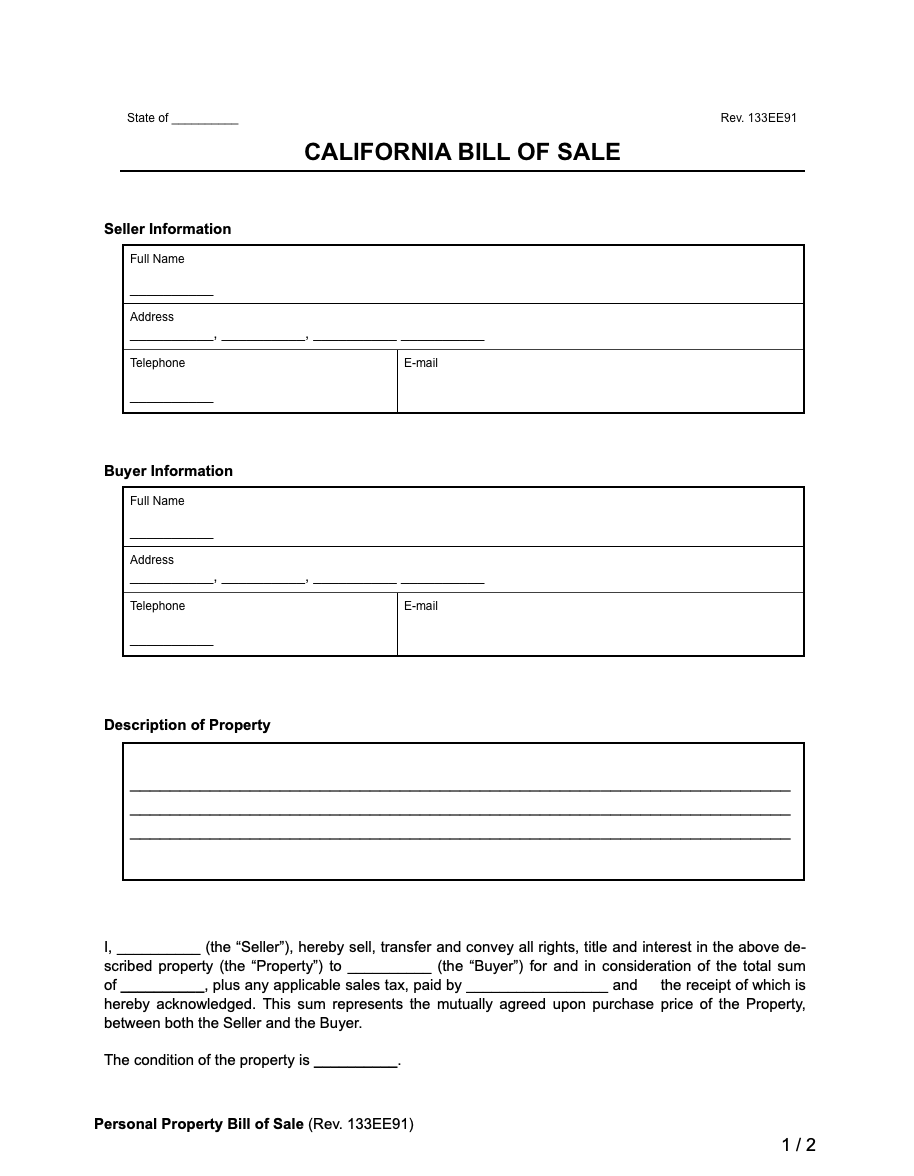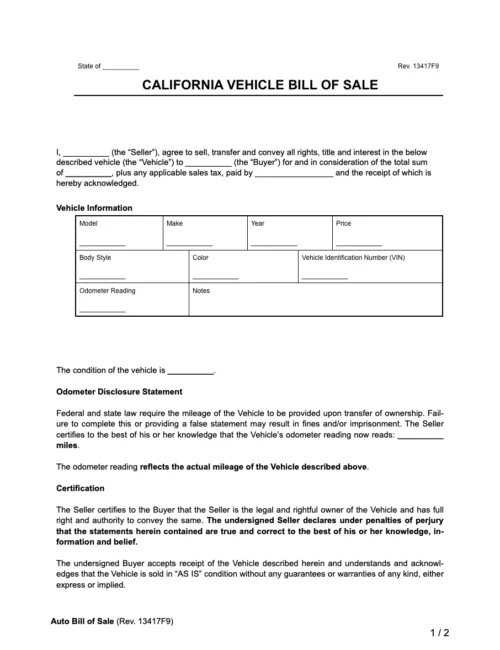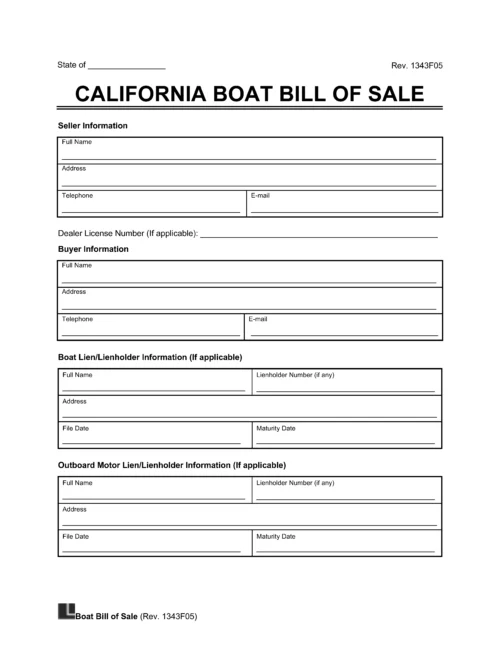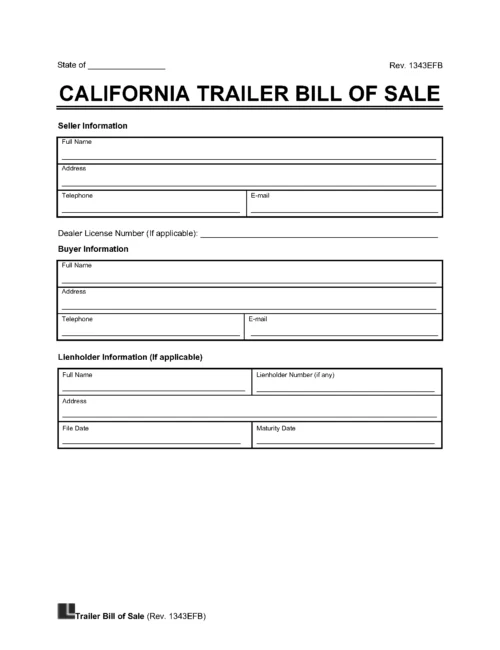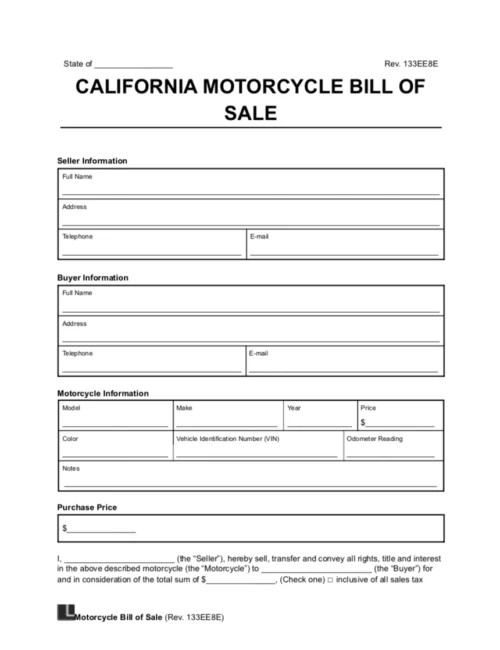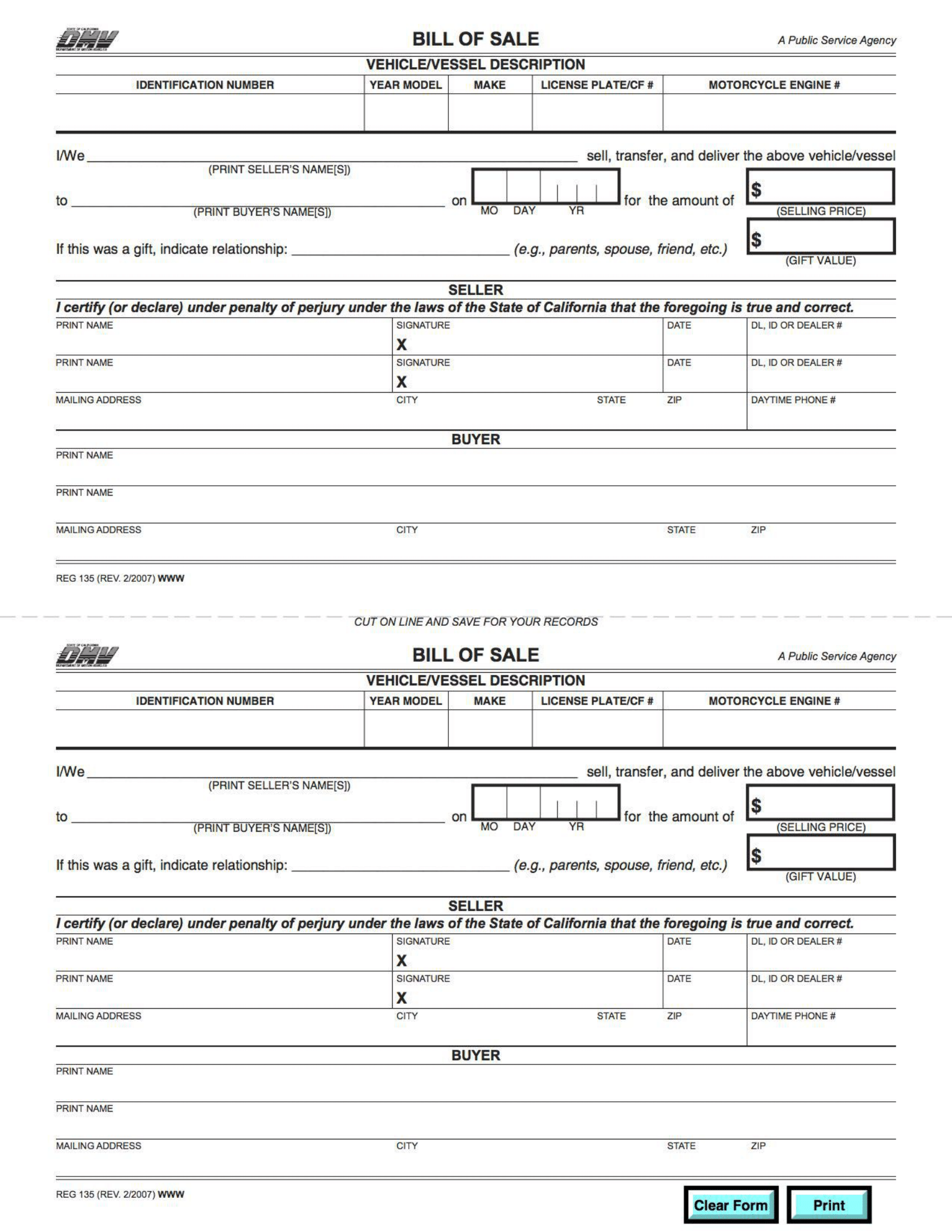A California bill of sale records the official sale of any personal item of value, such as a vehicle, boat/vessel, or firearm. A completed and signed form is legal proof that ownership of the documented item has been transferred to the buyer and that the seller has been paid the agreed-upon amount.
How to Register a Vehicle in California
Vehicle owners in the state are required to submit the documents and complete the registration process with the California Department of Motor Vehicles (DMV) within ten days of purchasing a new or used vehicle.
Bill of Sale – By Type (5)
A document that attests to the transfer of a used car from one owner to another, either as a sale or a gift.
Vehicle Bill of Sale
A document that legally transfers the ownership of a boat or other watercraft from a seller to a buyer.
Boat Bill of Sale
A document used to buy or sell a trailer (or any non-motorized vehicle pulled by another vehicle) and register it
Trailer Bill of Sale
A document used to record the transfer of a motorcycle and prevent fraudulent sales in the state of California.
Motorcycle Bill of Sale
Requirements
A bill of sale is not required for transactions between California-licensed dealers, and notarization is also not mandatory.
Language and Copy Requirements
- Language: A bill of sale can be drafted in any language. However, if using DMV’s Form Reg-135, it is only available in English. You may translate it using a certified interpreter, with court interpreters being legally valid. The California court system offers a Judicial Council Master List to find qualified translators.
- Number of Copies: For vehicle registration, the law requires three copies—one for the DMV, and one each for the buyer and seller. If an attorney is involved, they should also receive a copy.
Vehicle Registration Forms
- Application for Title or Registration (Form REG 343)
- Bill of Sale (Form REG 135)
- California driver’s license
- Proof of vehicle insurance
- Registration fees
- Signed certificate of title
- Statement of Facts (Form REG 256) – required to identify certain aspects and the vehicle’s condition
- Smog and emissions inspection
- A record of the odometer mileage – if the vehicle is less than ten years old
- A motor vehicle power of attorney (Form REG 260) – if you wish to appoint a representative
- The Verification of Vehicle (Form REG 31) and Permanent Trailer Identification (PTI) Application and Certification (Form REG 4017) together with other required documents – if you register a trailer
Boat Registration Forms
- Bill of sale
- Application for Vessel Certificate of Number Form
- Hull Identification Number
- California Certificate of Ownership or an Out-of-State Title
- Statement of Facts Form
Gun Registration Forms
In California, private-party sales are subject to the Dealer’s Record of Sale (DROS) process and must be completed through a licensed California dealer. This process includes providing proof that the buyer is over 21 years of age and undergoing a 10-day waiting period.
In addition to this, you will need the following documents:
- Bill of Sale
- Handgun Safety Certificate
- California Driver’s License or Identification Card for both buyer and seller
- Firearm details, such as make, model, and serial number
- Proof of residency, such as a rental agreement or utility bill
Sample
